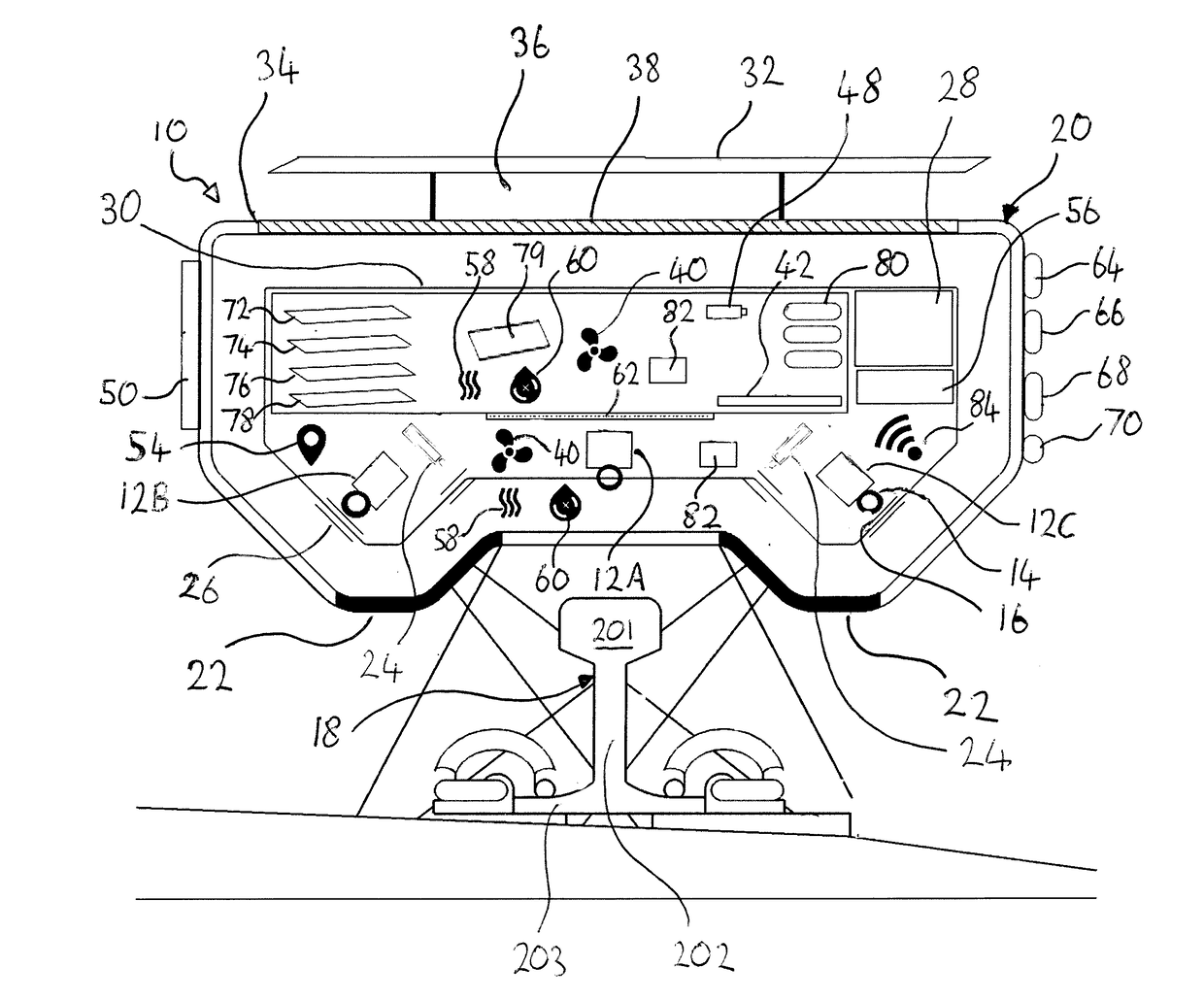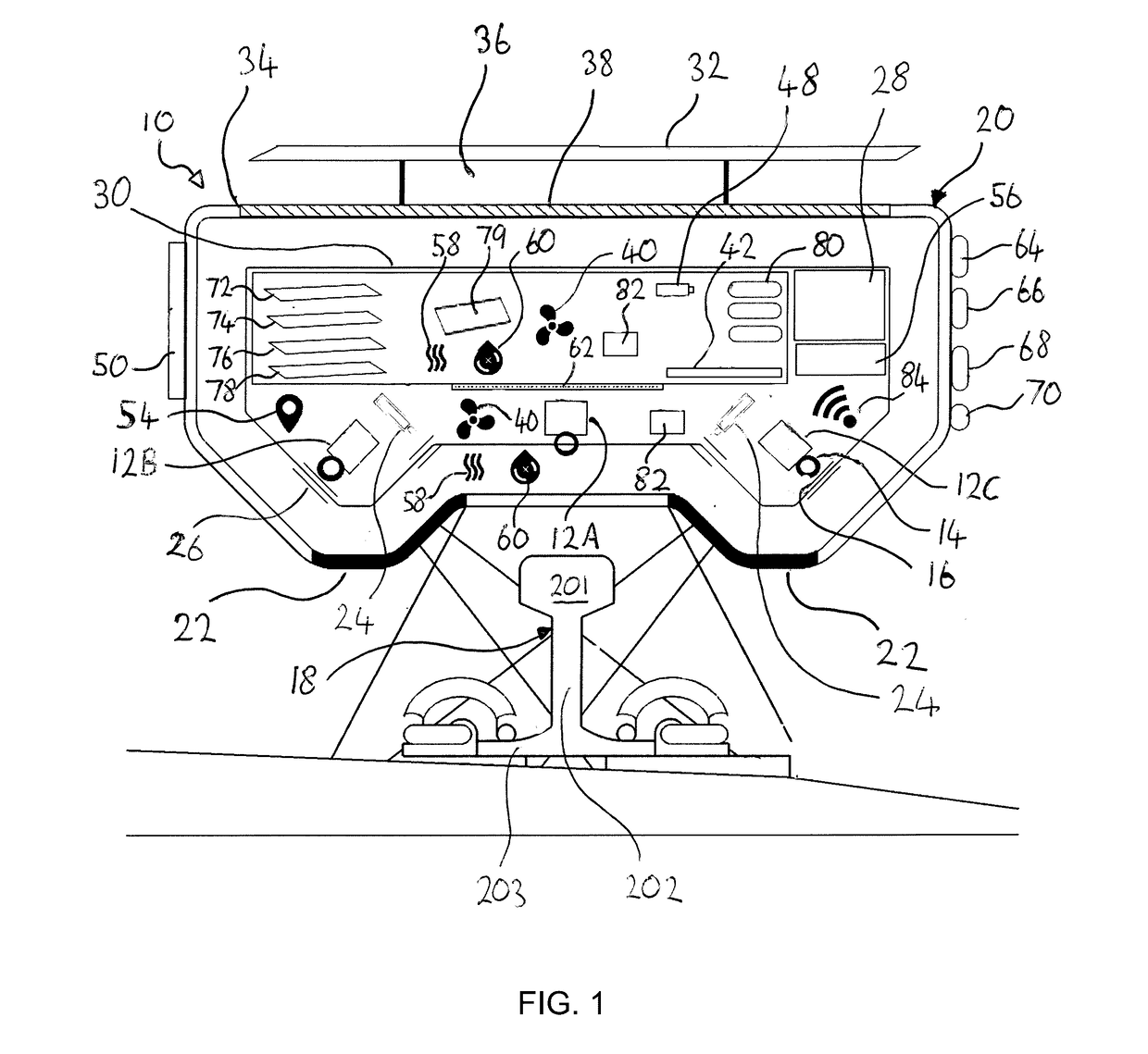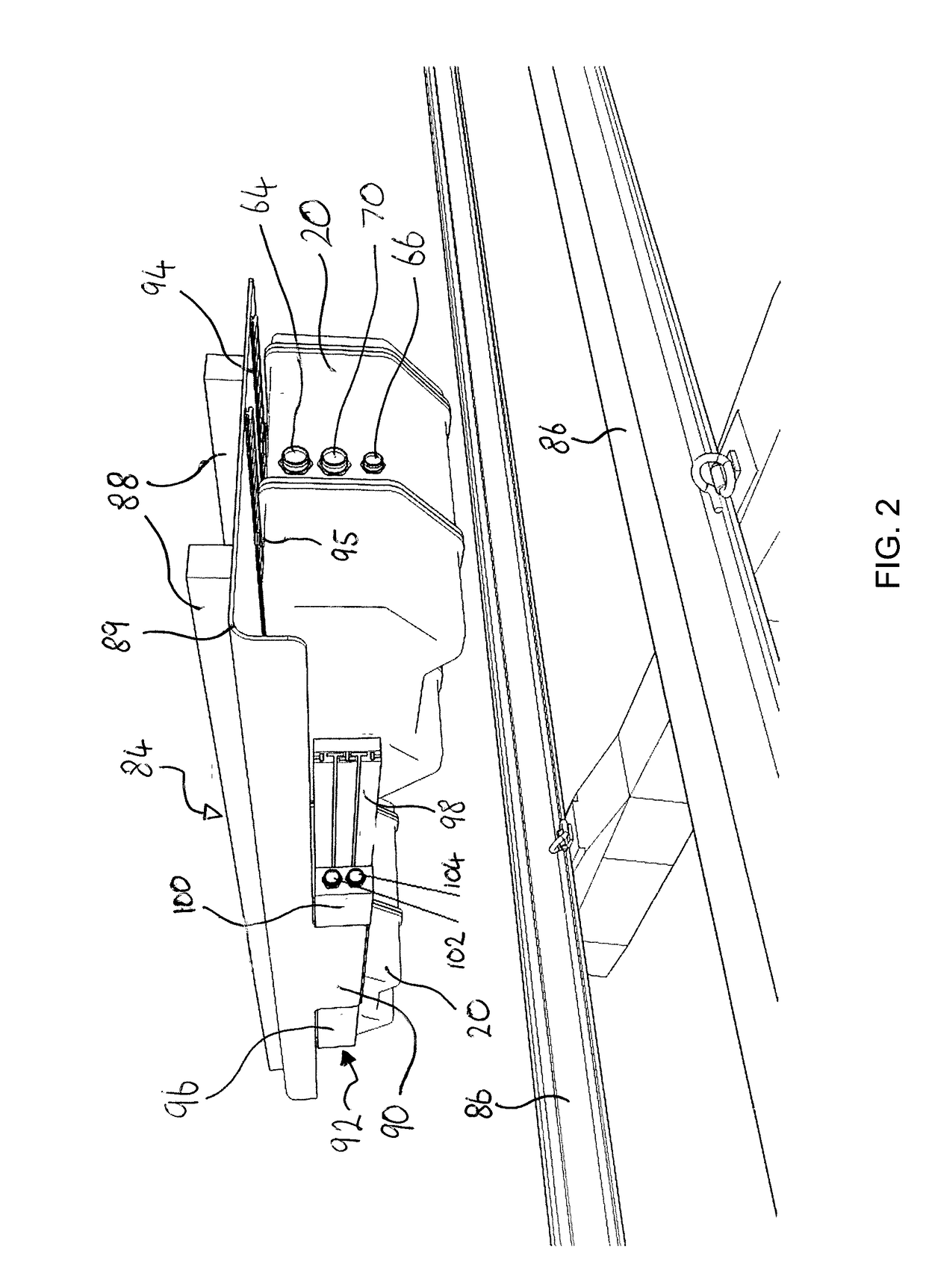Railroad track survey system
a technology for railway tracks and equipment, applied in railway auxiliary equipment, transportation and packaging, instruments, etc., can solve problems such as material strength degradation, track components and assets degrade and endure damage, and risk of complete failure or degradation
- Summary
- Abstract
- Description
- Claims
- Application Information
AI Technical Summary
Benefits of technology
Problems solved by technology
Method used
Image
Examples
Embodiment Construction
[0076]Examples of the invention described hereinbelow concern the use of a housed system for surveying railroad track, herein termed a “TrackVue” system. All the equipment required for scanning, processing and logging the visual and / or geometric features of railroad track are provided with a common support structure so as to allow for a system that can be installed on passenger trains and / or freight trains as well as, or instead of, being installed on dedicated inspection vehicles. A singular housed unit or installation of this kind is well suited for retrofitting on existing trains and can offer simple installation and operation. Systems according to examples of the invention may provide so-called ‘plug-and-play’ functionality when compared to the systems used in the prior art.
[0077]Turning firstly to FIG. 1, the system 10 includes a plurality of track scanning sensors, which in this example comprise a plurality of imaging sensors 12. The imaging sensors are preferably capable of r...
PUM
| Property | Measurement | Unit |
|---|---|---|
| width | aaaaa | aaaaa |
| length | aaaaa | aaaaa |
| field of view | aaaaa | aaaaa |
Abstract
Description
Claims
Application Information
 Login to View More
Login to View More - R&D
- Intellectual Property
- Life Sciences
- Materials
- Tech Scout
- Unparalleled Data Quality
- Higher Quality Content
- 60% Fewer Hallucinations
Browse by: Latest US Patents, China's latest patents, Technical Efficacy Thesaurus, Application Domain, Technology Topic, Popular Technical Reports.
© 2025 PatSnap. All rights reserved.Legal|Privacy policy|Modern Slavery Act Transparency Statement|Sitemap|About US| Contact US: help@patsnap.com



